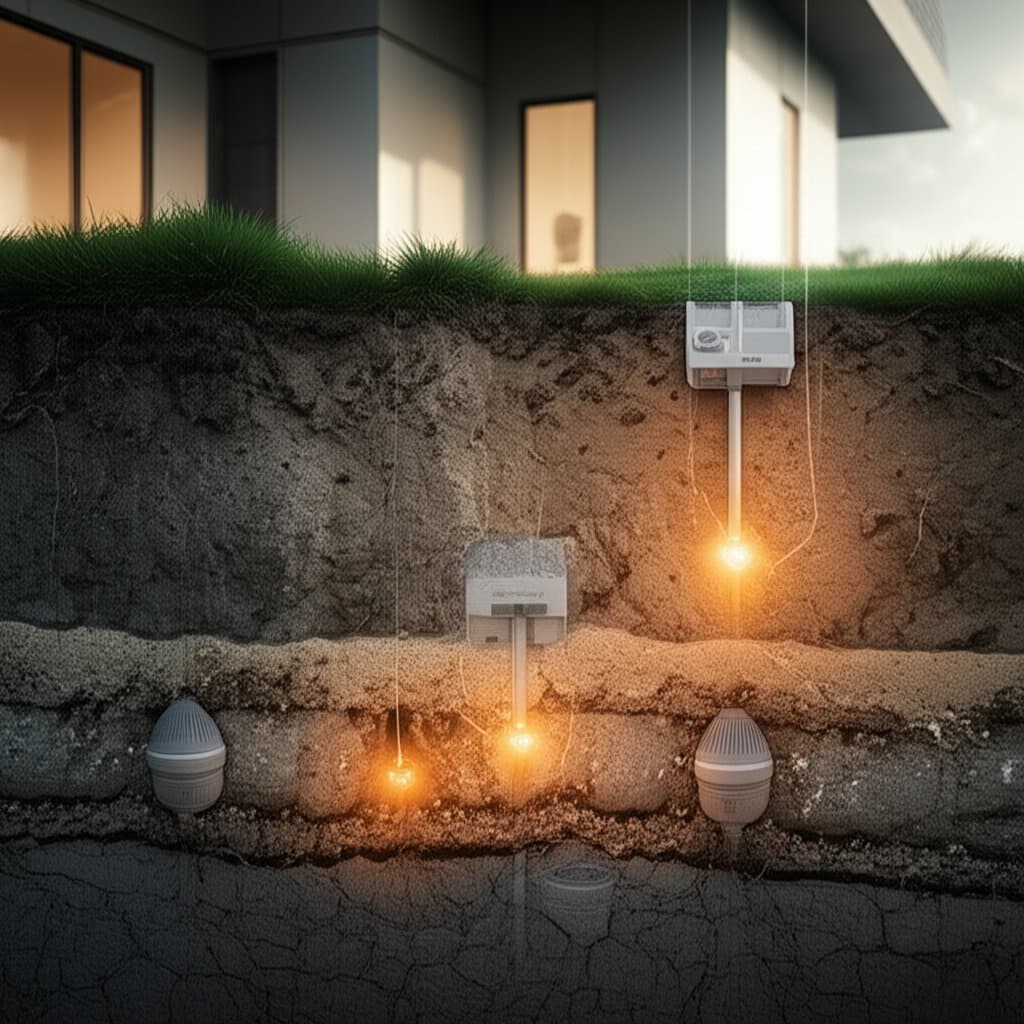Smart Sensors Detect Foundation Issues Before They Escalate
A home's foundation experiences minor movements over time due to soil shifts, moisture variations, and temperature fluctuations. These subtle changes can develop into cracks, uneven floors, or sticking doors if left unaddressed. Smart foundation sensors monitor these movements precisely, transforming potential issues into actionable data for timely intervention.
Understanding Smart Foundation Sensors
Smart foundation sensors consist of compact devices designed to measure displacement, inclination, vibration, and moisture levels at a building's perimeter. These sensors link to a central hub or mobile application, which transmits notifications when measurements deviate from established norms. Certain models focus on slab subsidence, while others assess wall lean or soil hydration adjacent to footings.
As components of interconnected home ecosystems known as the Internet of Things, these sensors aim to identify preliminary indicators of distress. This approach enables repairs before fissures widen or hydrostatic pressure compromises the structure.
Advantages and Limitations
Advantages
- Early identification of subsidence or displacement
- Ongoing surveillance without the need for physical inspections
- Notifications delivered via mobile device or email
- Informed scheduling of upkeep and remediation efforts
- Diminished expenses associated with extensive future repairs
Limitations
- Initial investment for sensors and central unit
- Dependence on reliable Wi-Fi or cellular connectivity
- Occasional requirements for adjustment or power source replacement
- Initial challenges in analyzing collected information
- Inability to replace evaluation by a qualified structural professional
Estimated Expenses
Individual wireless foundation sensors typically range from $100 to $250. A comprehensive setup incorporating five to ten sensors, a hub, and professional installation totals $800 to $2,500, influenced by the monitored area and structure dimensions. Optional professional oversight or data management services incur an additional $10 to $30 monthly, although select systems permit local data retention at no recurring cost.
Expenses increase with additional sensors, subsurface probes, or expanded parameters such as ambient humidity and seismic activity. Savings arise through self-installation or selection of minimal monitoring sites.
Durability and Upkeep
High-quality sensors endure for 5 to 10 years under normal conditions. Power sources require replacement every 1 to 3 years, or sooner if indicated by the application. Review data transmissions monthly to confirm operational status. Gently clean exteriors with a soft brush to eliminate accumulated dirt or residue. For embedded moisture detectors, inspect cable enclosures to ensure seals remain secure.
Address erratic measurements or data gaps by performing recalibration or system resets, often guided step-by-step within the application interface.
Key Specifications to Evaluate
Prior to purchasing foundation sensors, verify the following attributes:
- Precision levels of 0.1 inch or 0.1 degree for displacement and inclination
- Transmission distance sufficient for basement or subfloor coverage
- Ingress protection classification suitable for water exposure
- Power duration and configuration, whether rechargeable or disposable
- Storage capabilities, either onsite or remote
- Temperature tolerance aligned with local environmental conditions
Preparation Strategies
Conduct a drainage assessment around the property prior to deployment, as inadequate runoff contributes to the majority of foundational shifts. Position sensors strategically at corners, extended wall sections, and proximate to preexisting fissures or depressed zones.
For properties with accessible subfloors, secure safe entry and firm support. In slab-on-grade constructions, target locations along outer perimeter beams. Always contact utility services to locate underground lines before inserting probes or anchors.
Installation Process
- Develop a monitoring blueprint and annotate positions on a basic diagram.
- Secure or embed sensors according to producer directives regarding burial depth and alignment.
- Link devices to the central unit by activating power and synchronizing via the application.
- Establish reference measurements by allowing the system to capture steady states over multiple days.
- Validate information transmission from each unit.
- Configure notification limits to accommodate specific soil compositions and foundational designs.
Interpreting Sensor Readings
These devices capture incremental variations in angle or height. Consistent deviations suggest progressive subsidence. Abrupt increases may indicate subsurface erosion from leaks. Cyclical fluctuations tied to seasons typically represent benign thermal or hydric responses. Accumulated records over time distinguish routine dynamics from emerging threats.
Self-Installation Versus Professional Assistance
Most deployments suit individuals proficient with mobile applications and basic implements, involving sensor fixation and network integration. Engage specialists when:
- Slab-mounted units necessitate perforation
- Subfloor areas prove confined or humid
- Guidance is required for data assessment
- Evident structural alterations demand urgency
Structural experts can leverage sensor outputs to validate subsidence patterns and propose corrective measures.
Troubleshooting Common Issues
Connectivity Interruptions: Relocate the central unit nearer to sensors or incorporate signal boosters.
Erroneous Notifications: Reset reference points following significant meteorological events.
Accelerated Power Consumption: Substitute with durable, weather-resistant cells.
Water Penetration: Renew seals or enclosures as needed.
Considerations by Region and Weather
Regions with expansive clay formations benefit from surveillance of post-rain expansion and drought-induced contraction. In frigid zones, sensors reveal frost-induced uplift affecting slabs or appendages. Humid coastal areas gain from integrated inclination and hydration monitoring to anticipate motion and infiltration hazards.
Complementary Options
For those favoring simpler methods, conventional fissure gauges and periodic leveling surveys remain viable, albeit labor-intensive with manual documentation. Advanced sensors streamline these routines through automation. During initial builds, integrate subsidence markers or pilings equipped with observation access.
Strategies for Optimal Performance
- Initiate with a limited array and scale as required.
- Capture initial data during calm weather periods, avoiding recent tempests.
- Elevate wiring to deter vermin damage.
- Archive records prior to hardware or software updates.
- Treat notifications as cues for thorough reviews rather than alarms.
Safeguarding Structural Integrity
Smart foundation sensors deliver persistent oversight of a residence's underpinning. While they monitor rather than halt geotechnical activity, early insights empower proactive responses.
Upon detecting persistent localized shifts, arrange expert evaluation to forestall crack propagation. This vigilant strategy preserves foundational soundness and averts substantial restoration outlays.
